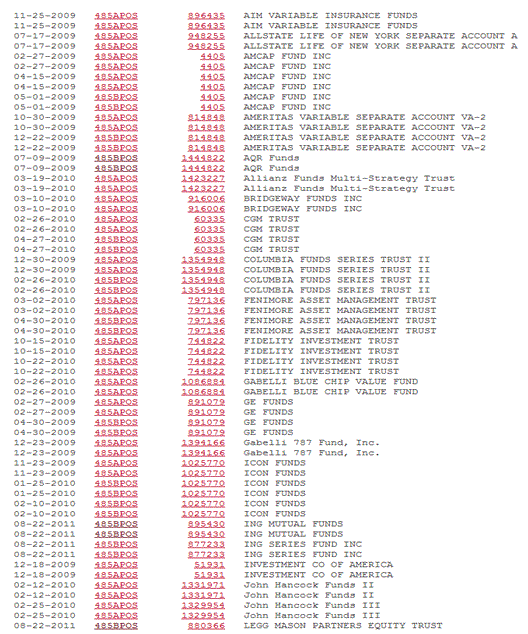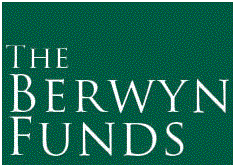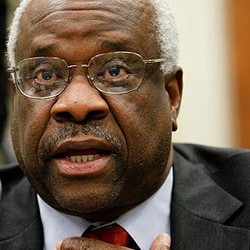December 1, 2011
Dear friends,
Welcome to the Observer 2.0. We worked hard over the past month to create a new look for the Observer: more professional, easier to read, easier to navigate and easier to maintain. We hope you like it.
It’s hard to believe that, all the screaming aside, the stock market finished November at virtually the same point that it began. Despite wild volatility and a ferocious month-end rally, Vanguard’s Total Stock Market Index Fund (VTSMX) ended the month with just a tiny loss.
Finding Funds that Lose at Just the Right Time
The best investors are folks who are able to think differently than do their peers: to find opportunities where others find only despair. In our ongoing attempt to get you to think differently about how you find a good investment, we decided to ask: do you ever want funds that aren’t top performers?
The answer, for long term investors, is “yes.” In general, you do not want to own the high-beta funds that have the best performance in “junk rallies.” Junk rallies are periods where the least attractive investment options outperform everything else. Those rallies push the riskiest, least prudent funds (temporarily) to the top.
One way to identify junk rallies is to look for markets where the performance of solid, high-quality companies dramatically lags the performance of far more speculative ones. We did that by comparing the returns of index funds tracking the boring Dow Jones Industrial Average (blue chips) with the performance of funds tracking the endlessly exciting NASDAQ. It turns out that there are three years where the Nazz outperformed the Dow by more than 1000 basis points (i.e., by 10 percentage points). Those years are 2003 (Dow trails by 2100 bps), 2007 (1040 bps) and 2009 (3200 bps).
This month’s screen looks at funds that, over the past 10 years, are above average performers except during junk rallies. In junk rally years, we looked for absolute returns of 10% or more.
|
10 year return, thru 11/30/11 |
10-year |
Comments |
|||
| Amana Trust Growth | Large Growth |
7.4 |
1 |
A FundAlarm “star in the shadows,” one of a series of funds brilliantly managed by Nick | |
| American Century Strategic Allocation: Aggressive | Aggressive Allocation |
5.2 |
15 |
Team-managed, broadly diversified with “sleeves” of the portfolio (e.g., “international bonds”) farmed out to other AC managers. | |
| American Century Strategic Allocation: Moderate | Moderate Allocation |
5.2 |
14 |
Ditto. | |
| Columbia Greater China A | China Region |
13.1 |
36 |
5.75% load, specializes in high quality Chinese firms. | |
| DF Dent Premier Growth | Mid-Cap Growth |
5.9 |
35 |
Daniel F. Dent, that is. | |
| DFA Emerging Markets II | Diversified Emerging Mkts |
15.7 |
24 |
Quant, the DFA funds are about impossible to get into. | |
| Eaton Vance Parametric Tax-Managed Emerging Markets | Diversified Emerging Mkts |
17.7 |
7 |
A sort of “enhanced index” fund that rebalances rarely and has more small market exposure than its peers. Sadly, an institutional fund. | |
| Fidelity Contrafund | Large Growth |
7.3 |
1 |
One of Fidelity’s longest-tenured managers and most consistently excellent funds | |
| Franklin Templeton Growth Allocation | Aggressive Allocation |
5.8 |
9 |
Same manager for more than a decade, but a 5.75% load. | |
| ING Corporate Leaders Trust | Large Value |
7.5 |
1 |
One of the Observer’s “stars in the shadows,” this fund has no manager and has been on auto-pilot since the Great Depression | |
| Invesco European Growth A | Europe Stock |
9.6 |
22 |
An all-cap fund that’s looking for high-quality firms, same lead manager for 14 years | |
| MFS Research International A | Foreign Large Blend |
6.1 |
16 |
Neat strategy: the portfolio is constructed by the fund’s research analysts, with a growth at a reasonable price discipline. | |
| Munder Mid-Cap Core Growth | Mid-Cap Growth |
8.1 |
5 |
Price-sensitive, low-turnover institutional midcap fund. | |
| Permanent Portfolio | Conservative Allocation |
11.3 |
1 |
Despite all the nasty things I’ve written about it, there’s been no fund with a more attractive risk-return profile over the last decade than this one. The portfolio is an odd collection of precious metals, currency, bonds and aggressive stocks. | |
| T. Rowe Price Global Technology | Technology |
7.4 |
3 |
The manager’s only been around for three years, but the strategy has been winning for more than 10. | |
| T. Rowe Price Media & Telecomm | Communications |
12.0 |
1 |
Top 1% performer through three sets of manager changes | |
| Wells Fargo Advantage Growth I | Large Growth |
7.3 |
1 |
Ognar! Ognar! Formerly Strong Growth Fund, it’s been run by Tom Ognar for a nearly a decade. Tom was mentored by his dad, Ron, the previous manager. | |
As one reads the Morningstar coverage of these funds, the words that keep recurring are “disciplined,” “patient” and “concentrated.” These are folks with a carefully articulated strategy who focus on executing it year after year, with little regard to what’s in vogue.
While this is not a “buy” list, it does point out the value of funds like Matthews Asian Growth & Income (MACSX), in which I’ve been invested for a good while. MACSX puts up terribly relative performance numbers (bottom 10-15%) every time the Asian market goes wild and brilliant ones (top 5%) when the markets are in a funk. If you’re willing to accept bad relative performance every now and then, you end up with excellent absolute and relative returns in the long-run.
Updating “The Observer’s Honor Roll, Unlike Any Other”
In November 2011, we generated an Honor Roll of funds. Our criterion was simple: we looked for funds that were never abysmal. We ignored questions of the upside entirely and focused exclusively on never finishing in a peer group’s bottom third. That led us to two dozen no-load funds, including the Price and Permanent Portfolio funds highlighted above.
One sharp member of the discussion board community, claimu, noticed the lack of index funds in the list. S/he’s right: I filtered them out, mostly because I got multiple hits for the same index. Eleven index funds would have made the list:
- four S&P 500 funds (California Investment, Dreyfus, Price, Vanguard)
- four more-or-less total market funds (Price, Schwab, Schwab 1000, Vanguard)
- one international (Price), one growth (Vanguard) and one small growth (Vanguard).
The story here might be the 67 S&P500 index funds that have a ten-year record but didn’t make the list. That is, 95% of S&P500 funds were screened-out because of some combination of high expenses and tracking error.
Those differences in expenses and trading efficiency add up. An investment a decade ago in the Vanguard 500 Index Admiral Class (VFIAX) would have returned 2.45% annually over the decade while the PNC S&P 500 “C” shares (PPICX) earned only 1.14% – less than half as much. $10,000 invested in Vanguard a decade ago would now (11/30/11) be worth $13,300 while a PNC investor would have $11,700 – for having taken on precisely the same risks at precisely the same time.
Press Release Journalism: CNBC and the End of the Western World
Does anyone else find it disturbing that CNBC, our premier financial news and analysis network, has decided to simply air press releases as news? Case in point: the end of the world as we know it. On 11/30/11, CNBC decided to share David Murrin’s fervent announcement that there’s nowhere worth investing except the emerging economies:
The Western world has run out of ideas and is “finished financially” while emerging economies across the world will continue to grow, David Murrin, CIO at Emergent Asset Management told CNBC on the tenth anniversary of coining of the so-called BRIC nations of Brazil, Russia, India and China, by Goldman Sachs’ Jim O’Neill.
“I still subscribe and I’ve spoken about it regularly on this show that this is the moment when the Western world realizes it is finished financially and the implications are huge, whereas the emerging BRIC countries are at the beginning of their continuation cycle,” Murrin told CNBC. (The Western World Is ‘Finished Financially’)
One outraged reader phrased it this way: “So why do reasonably respectable news outlets take as news the ravings of someone who has so obvious a financial stake in what is being said … News flash, “The CEO of Walmart declares the death of main street businesses . . . ” Good God!”
While Mr. Murrin is clearly doing his job by “talking his book,” that is, by promoting interest in the investment products he sells, is CNBC doing theirs? If their job is either (a) providing marketing support for hedge funds or (b) providing inflammatory fodder, the answer is “yes.” If, on the other hand, their job is . . .oh, to act like professional journalists, the answer is “no.”
What might they have done? Perhaps examine Mr. Murrin’s credibility. Ask even a few questions about his glib argument (here’s one: “the Chinese markets are at the mercy of the world’s largest and least accountable bureaucracy, one which forces the private markets to act as proxies for a political party. To what extent should investors stake their financial futures on their faith in the continued alignment of that bureaucracy’s interests and theirs?”). Perhaps interview someone who suspects that the expertise of companies domiciled in the Western world will allow them to out-compete firms domiciled elsewhere? (Many thanks to Nick Burnett of CSU-Sacramento, both for pointing out the story and for supplying appropriate outrage.)
A Gift Freely Given
We’re deeply grateful for the support, financial, intellectual and moral, that you folks have offered during this first year of the Observer’s life. It seemed fitting, in this season of thanksgiving and holidays, to say thanks to you all. As a token of our gratitude, we wanted to share a small gift with each of you. Chocolate was my first choice, but it works poorly as an email attachment. After much deliberation, I decided to provide some practical, profitable advice from a field in which I have both academic credentials and lots of experience: communication.
 Many of you know that I am, by profession and calling, a Professor of Communication Studies at Augustana College. Over the years, the college has allowed me to explore a wide variety of topics in my work, from classical rhetoric and persuasion theory, to propaganda, persuasion and business communication practices. Spurred by a young friend’s difficulties at work and informed by a huge body of research, I wrote a short, practical guide that I’d like to share with each of you.
Many of you know that I am, by profession and calling, a Professor of Communication Studies at Augustana College. Over the years, the college has allowed me to explore a wide variety of topics in my work, from classical rhetoric and persuasion theory, to propaganda, persuasion and business communication practices. Spurred by a young friend’s difficulties at work and informed by a huge body of research, I wrote a short, practical guide that I’d like to share with each of you.
Miscommunication in the Workplace: Sources, Prevention, Response is a 12-page guide written for bright adults who don’t study communication for a living. It starts by talking about the two factors that make miscommunication so widespread. It then outlines four practical strategies which will reduce the chance of being misunderstood and two ways of responding if it occurs anyway. There’s a slightly-classy color version, but also a version optimized for print. Both are .pdf files.
In the theme of thanksgiving, I should recognize the three people who most helped bring focus and clarity to my argument. They are
Junior Yearwood, a friend and resident of Trinidad, brought a plant manager’s perspective, an editor’s sensibility and a sharp eye to several drafts of the guide. Junior helped both clarify the document’s structure and articulate its conclusion.
Nicholas Burnett, an Associate Dean at Cal State – Sacramento, brought a quarter century’s experience in teaching and analyzing business and professional communication. Nick pointed me to several lines of research that I’d missed and helped me soften claims that probably went beyond what the research supports.
Cheryl Welsch, a/k/a Chip, the Observer’s Technical Director and Director of Information Technology at SUNY-Sullivan, brought years of experience as a copy editor (as Hagrid would have it, she’s “a thumpin’ good one”). She also helped me understand the sorts of topics that might be most pressing in helping folks like her staff.
The Harvard Business Review published Communicating Effectively (2011), which is a lot more expensive (well, this is free so pretty much everything is), longer (at 250 pages) and windier but covers much of the same ground.
If you have reactions, questions or suggested revisions, please drop a note to share them with me. I’m more than willing to update the document. If you really need guidance to the underlying research, it’s available.
 Two other holiday leads for you. QuoteArts.com offers a bunch of the most attractive, best written greeting cards (and refrigerator magnets) that I’ve seen. The Duluth Trading Company offers some of the best made, best fitting men’s work clothing I’ve bought in years. The Observer has no financial link to either of these firms and I know they have nothing to do with funds, but I’m really pleased with them and wanted to give you a quick heads-up about them.
Two other holiday leads for you. QuoteArts.com offers a bunch of the most attractive, best written greeting cards (and refrigerator magnets) that I’ve seen. The Duluth Trading Company offers some of the best made, best fitting men’s work clothing I’ve bought in years. The Observer has no financial link to either of these firms and I know they have nothing to do with funds, but I’m really pleased with them and wanted to give you a quick heads-up about them.
Two Funds, and why they’re worth your time
Really worth it. Every month the Observer profiles two to four funds that we think you really need to know more about. They fall into two categories:
Most intriguing new funds: good ideas, great managers. These are funds that do not yet have a long track record, but which have other virtues which warrant your attention. They might come from a great boutique or be offered by a top-tier manager who has struck out on his own. The “most intriguing new funds” aren’t all worthy of your “gotta buy” list, but all of them are going to be fundamentally intriguing possibilities that warrant some thought. This month’s new fund:
Lockwell Small Cap Value (LOCSX): a product of The Great Morgan Stanley Diaspora, Lockwell is a new incarnation of a very solid institutional fund. The manager, who has successfully run billions of dollars using this same discipline, is starting over with just a million or two. While technically a high-minimum institutional fund, there might be room to talk.
Stars in the shadows: Small funds of exceptional merit. There are thousands of tiny funds (2200 funds under $100 million in assets and many only one-tenth that size) that operate under the radar. Some intentionally avoid notice because they’re offered by institutional managers as a favor to their customers (Prospector Capital Appreciation and all the FMC funds are examples). Many simply can’t get their story told: they’re headquartered outside of the financial centers, they’re offered as part of a boutique or as a single stand-alone fund, they don’t have marketing budgets or they’re simply not flashy enough to draw journalists’ attention. There are, by Morningstar’s count, 75 five-star funds with under $100 million in assets; Morningstar’s analysts cover only eight of them.
The stars are all time-tested funds, many of which have everything except shareholders.
Artisan Small Cap (ARTSX): they’re baaaaaack! ARTSX is the fund that launched Artisan had a blazing start in 1996: a chart-topping 35% gain, $300 million in assets, and a principled close within 11 months. What followed were nearly 15 years of uninspiring performance. In 2009, the management team that has brilliantly guided Artisan Mid Cap took over here and the results have been first rate. Time for another look!
Fund Update: RiverPark Short-Term High Yield and RiverPark/Wedgewood
Two of the RiverPark funds that we’ve profiled are having banner years.
RiverPark/Wedgewood (RWGFX) offers a concentrated portfolio of exceedingly high-quality stocks. They’ve got a great track record with this strategy, though mostly through separately-managed accounts. I have some questions about whether the SMA success would translate to similar performance in their fund. The answer appears to be “yes,” at least so far. For 2011 (through 11/29), they’re in the top 2% of large growth funds. Their 2.2% gain places them about 750 basis points ahead of their average peer. The fund has gathered $70 million in assets.
RiverPark Short Term High Yield (RPHYX) continues to be a model of stability. Its unique portfolio of called high yield bonds and other orphan investments is yielding 4.2% and has returned 3.25% YTD (through 11/29/11). Judged as a high-yield bond fund, that’s great: top 4% YTD with minimal share price volatility. Viewed as a cash management tool, it’s even better. Latest word is that assets are up to $35 million as more advisors come onboard.
In mid-November, Barron’s ran a nice profile, “Enjoying Their Freedom,” of RiverPark and of these two funds.
Closure alert: Aston/River Road Independent Value
In a November 18 filing with the SEC, Aston announced that ARVIX will close to new investors “if the net assets of the Fund reach a certain level in combination with other assets managed in the same investment strategy by … River Road Asset Management. Currently, the Fund expects its Soft Close Level to be between $500 million and $600 million in net assets.” Eric Cinnamond, the manager suggests that “given our sales pipeline,” the fund will likely close before December is over. Existing investors will be permitted to add to their accounts but (with a few exceptions) no new investors will be allowed in.
In general, folks interested in a low volatility strategy crafted for high volatility markets really should look, and look quickly, to see whether ARVIX makes sense for their portfolios. The Observer’s April 2011 profile of ARVIX makes clear that this is a strategy with a long, consistently and hugely successful trade record. So far in 2011, it’s in the top 1% of small value funds. Mr. Cinnamond is both modest and thoughtful, and tries to balance a celebration of the fund’s success with realism about the years ahead:
This year has set up nicely for the portfolio — ideal market for a flexible and opportunistic strategy. Every year won’t be like this (the product has high tracking error) and if small caps go lot higher from here, the strategy will most likely lag as I continue to be positioned defensively with below average risk in the equity portfolio and above average cash levels. That said, as you know, this can change quickly — hopefully recent volatility in the small cap market continues into 2012.
Right, “hopefully recent volatility … continues.” Volatile markets create outsized opportunities that Mr. Cinnamond has, over the course of years, profitably exploited. Two other takes on the fund are the fund’s most recent profile of itself and a new Morningstar essay which looks at the two best small-value funds in 2011: The Top Performing Funds in 2011’s Toughest Category.
Launch alert:
 Forward Management introduced a new investor share class for the $1.2 billion, Forward Select Income Fund (FFSLX) at the end of November, 2011. The fund focuses on the preferred securities of REITs, rather than their common stock. The fund’s yielding over 9% currently, and has pretty consistently finished near the top of the real estate fund stack by combining above average returns with low volatility.
Forward Management introduced a new investor share class for the $1.2 billion, Forward Select Income Fund (FFSLX) at the end of November, 2011. The fund focuses on the preferred securities of REITs, rather than their common stock. The fund’s yielding over 9% currently, and has pretty consistently finished near the top of the real estate fund stack by combining above average returns with low volatility.
This is the fifth Forward real estate fund to be offered directly (i.e., without a load) to retail investors. The others are Forward International Real Estate (FFIRX), the Forward Real Estate Long/Short (FFSRX), Forward Real Estate and the Forward Global Infrastructure (FGLRX). In each case, there’s a $4000 minimum which is reduced to $500 if you set up an account with an automatic investing plan.
Fidelity launched Fidelity Total Emerging Markets (FTEMX) on November 1st. FTEMX represents a really good idea: an emerging markets balanced fund. The fund will invest about 60% of its assets in stocks and 40% in bonds, which should over time provide stock-like returns with greatly reduced volatility. That might translate to higher shareholder returns, as folks encounter fewer dramatic declines and are less likely to be tempted to sell low. The fund is managed by a team led by John Carlson. Mr. Carlson has been doing really good work for years on Fidelity’s emerging markets bond fund, Fidelity New Market Income (FNMIX). There’s a $2500 minimum investment and an expense ratio of 1.40%.
One landmine to avoid: don’t pay attention to the fund’s performance against its Morningstar peer group. Morningstar doesn’t have an E.M. balanced group, and so assigned this fund to E.M. stock.
I’ve also profiled the closed-end First Trust/Aberdeen Emerging Opportunities (FEO) fund. FEO has a higher expense ratio (1.80%) but can often be bought at a discounted price.
Alpine: A slight change in elevation
The good folks at the Alpine Funds have taken inspiration for their namesake mountain range. Effective January 12, they’re increasing their minimum initial investment for stock funds by a thousand fold: “For new shareholders after January 3, 2012, the minimum initial investment of the Institutional Class has increased from $1,000 to $1,000,000.” The minimum for bond rises will rise only a hundredfold: “For new shareholders after January 3, 2012, the minimum initial investment of the Institutional Class (formerly the Investor Class) has increased from $2,500 to $250,000.”
At the same time they’re renaming a bunch of funds and imposing a 5.5% front load.
| Alpine Dynamic Balance Fund | Alpine Foundation Fund |
| Alpine Dynamic Financial Services Fund | Alpine Financial Services Fund |
| Alpine Dynamic Innovators | Alpine Innovators Fund |
| Alpine Dynamic Transformations Fund | Alpine Transformations Fund |
Of the funds involved, Dynamic Transformations (ADTRX) is most worth a look before the no-load door closes. It’s a relatively low turnover, relatively tax efficient mid-cap growth fund that invests in companies undergoing, well, dynamic transformations. (After January, I guess the transformations can be rather less dynamic.) That discipline parallels the discipline successfully applied at Artisan’s Mid Cap (ARTMX) fund. As with Alpine’s other funds, risk management is not a particular strength and so it tends to be a high volatility / high return strategy; that is, it captures more of both the upside and the downside in any market movement.
(Thanks to the members of the Observer’s discussion board community, who read SEC filings even more closely – and with more enthusiasm, if you can imagine that – than I do. Special thanks to TheShadow for triggering the discussion.)
Briefly Noted . . .
Normally “leaving” is followed by “coming back.” Not so, at Fidelity. Andy Sassine, manager of Fidelity Small Cap Stock (FSCLX) is taking a six-month year, but the firm made clear that it’s a one-way trip. He might work at Fidelity again, but won’t work as a manager. His fund is being taken over by Lionel Harris of Fidelity Small Cap Growth (FCPGX). Small Cap Growth will be taken over by Pat Venanzi, who manages two small slices of Fidelity Stock Selector Small Cap (FDSCX) and Fidelity Series Small Cap Opportunities (FSOPX).
In the 2012 first quarter, American Beacon will merge the Bridgeway Large Cap Value (BRLVX) fund into the newly created American Beacon Bridgeway Large Cap Value and retain Bridgeway as subadviser. Bridgeway Social Responsibility, a previous Bridgeway offering, was acquired by Calvert Large Cap Growth. This past May, that fund merged into Calvert Equity (CSIEX), which is not subadvised by Bridgeway.
Allianz RCM Disciplined International Equity (ARDAX) will liquidate on Dec. 20, 2011.
American Beacon Evercore Small Cap Equity (ASEAX) is closing ahead of its liquidation on or about Dec. 15, 2011.
Dreyfus has closed and plans to liquidate the Dreyfus Select Managers Large Cap Growth (DSLAX) as of Dec. 13, 2011.
In one of those “laws of unintended consequences moves,” Schwab gave in to advisors’ demands and changed the benchmark for the Schwab International Index Fund (SWISX). Investors claimed that it was too hard to compare SWISX’s performance because it was the only fund using Schwab’s internally-generated benchmark. In an entirely Pyrrhic victory, Schwab moved to the standard benchmark (MSCI EAFE) and thereby lost any reason for existence. The move will require the fund to divest itself of a substantial, and entirely sensible, stake in Canadian stocks and make substantial investments in mid-cap stocks.
American Century International Value Fund (ACVUX) is being rebuilt: new management team, new discipline (quant rather than fundamental), new benchmark (MSCI EAFE Value)
In closing . . .
Many thanks to all of the folks who have used the Observer’s Amazon link. It’s remarkable easy to use (click on it, set it as your default Amazon bookmark and you’re done) and helps a lot.
I’ve been working through three books that might be worth your year-end attention.
Robert Frank, wealth reporter for the WSJ, The High-Beta Rich: How the Manic Wealthy Will Take Us to the Next Boom, Bubble, and Bust. In some ways it’s a logical follow-up to his book Richistan: A Journey Through the American Wealth Boom and the Lives of the New Rich (2008). The 8.5 million Richistanis, Frank discovered, own things like “shadow yachts,” which are the yachts which follow the rich guys’ yacht and carry their helicopters. In The High-Beta Rich, Frank looks at the ugly implications of financial instability among the very wealthy. Generally speaking, their worth is highly volatile and market dependent. A falling market decreases the wealth of the very rich about three times more than it does for the rest of us. Frank writes:
Suddenly, in 1982, the year I call the magic year for wealth, the 1 percent, which used to be like the teetotalers of our economy, became the binge drinkers.
And when times were good, they did two or three times better than everyone else. When times were bad, they did two or three times worse. So if you look at the last three recessions, the top 1 percent lost two to three times in income what the rest of America lost. And, you know, part of it has to do with more and more of today’s wealth is tied to the stock market, whether it’s executives who are paid in stock or somebody who’s starting a company and takes it public with an IPO.
And the stock market is more than 20 times as volatile as the real economy.
And, as it turns out, slamming the rich around has real implications for the financial welfare of the rest of us. Frank appeared on NPR’s Talk of the Nation program on November 16. There’s a copy of the program and excerpts from the book available on Talk of the Nation’s website.
Folks who find their faith useful in guiding their consumption and investments might enjoy a new book by a singularly bright, articulate younger colleague of mine, Laura Hartman. Laura is an assistant professor of religion and author of The Christian Consumer: Living Faithfully in a Fragile World. The fact that it’s published by Oxford University Press tells you something about the quality of its argument. She argues:
At base, consumerism arises from a distorted view of human nature. This ethos teaches that our wants are insatiable (and the provocations of advertising help make this so), that buying the new article of clothing or fancy gadget will answer our deepest longings. That we are what we own. Humans, then, are seen as greedy and lacking and shallow. (192)
While this isn’t a “how-to” guide, Laura does offer new (or freshened) ways of thinking about how to consume what you need with celebration, and how to leave what others need untouched.
The most influential book I’ve read in years is Alan Jacobs’ Pleasures of Reading in an Age of Distraction. Jacobs is a professor of English at Wheaton College in Illinois. Despite that, he writes and thinks very well. Jacobs takes on all of the wretched scolds who tell us we need to be reading “better” stuff and argues, instead, that we need to rediscover the joy of reading for the joy of reading.
One of Jacobs’ most compelling sections discussed the widespread feeling, even among hard-reading academics, that we’ve lost the ability to read anything for more than about five minutes. It made me feel good to know that I wasn’t alone in that observation. He has convinced me to try a Kindle which, he argues, has renewed in him the habit of reading which such passion that you sink into the book and time fades away. The Kindle’s design makes it possible, he believes, to feel like we’re connected while at the same time disconnecting.
Regardless of what you buy or who you share our link with, thanks and thanks again!
In January, we’ll look at two interesting funds, the new HNP Growth & Preservation (HNPKX) which brings a “managed futures” ethos to other asset classes and Value Line Asset Allocation (VLAAX) which has one of the most intriguing performance patterns I’ve seen. In addition, we’ll ring in the New Year by looking at the implication of following the “Where to Invest 2011” articles that were circulating a year ago.
Wishing you great joy in the upcoming holiday season,
David



 “As technology becomes more sophisticated, developing the capacity to help us make moral and ethical choices as well as more pragmatic decisions, what we call human wisdom will reach new levels” (quoting Marc Prensky,
“As technology becomes more sophisticated, developing the capacity to help us make moral and ethical choices as well as more pragmatic decisions, what we call human wisdom will reach new levels” (quoting Marc Prensky, 









